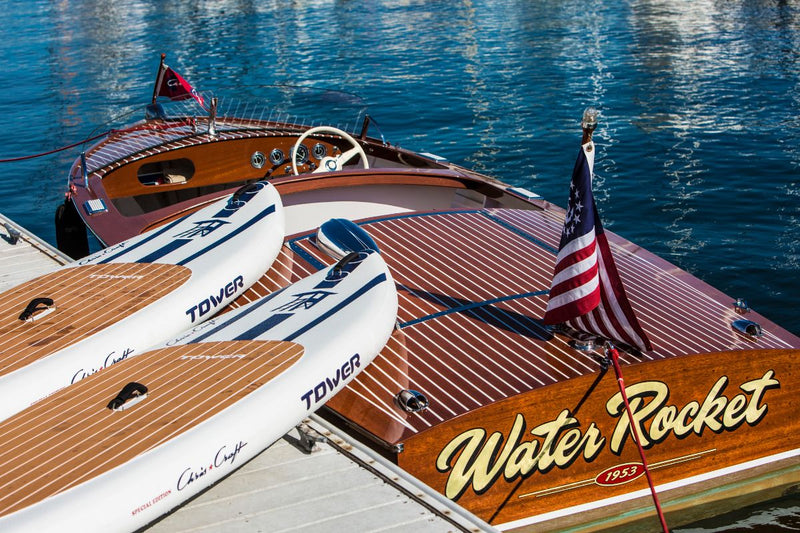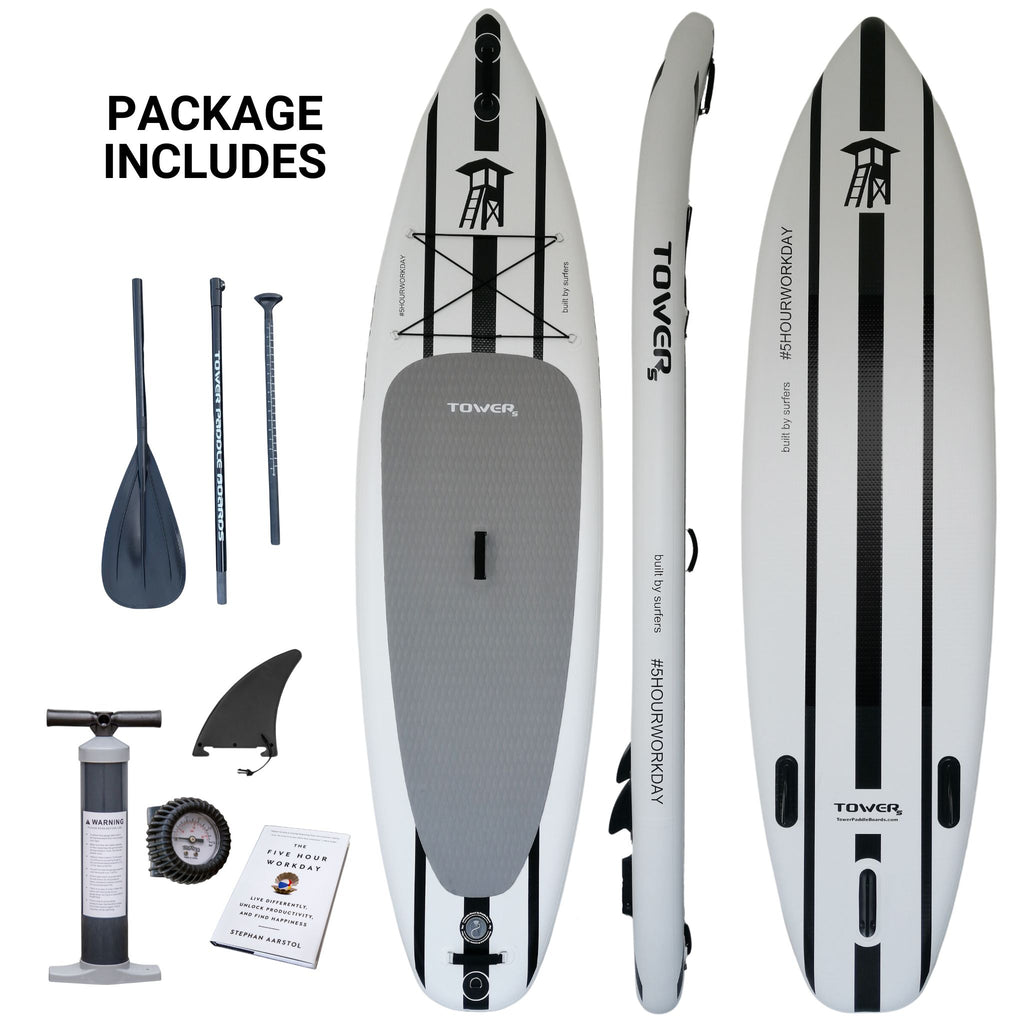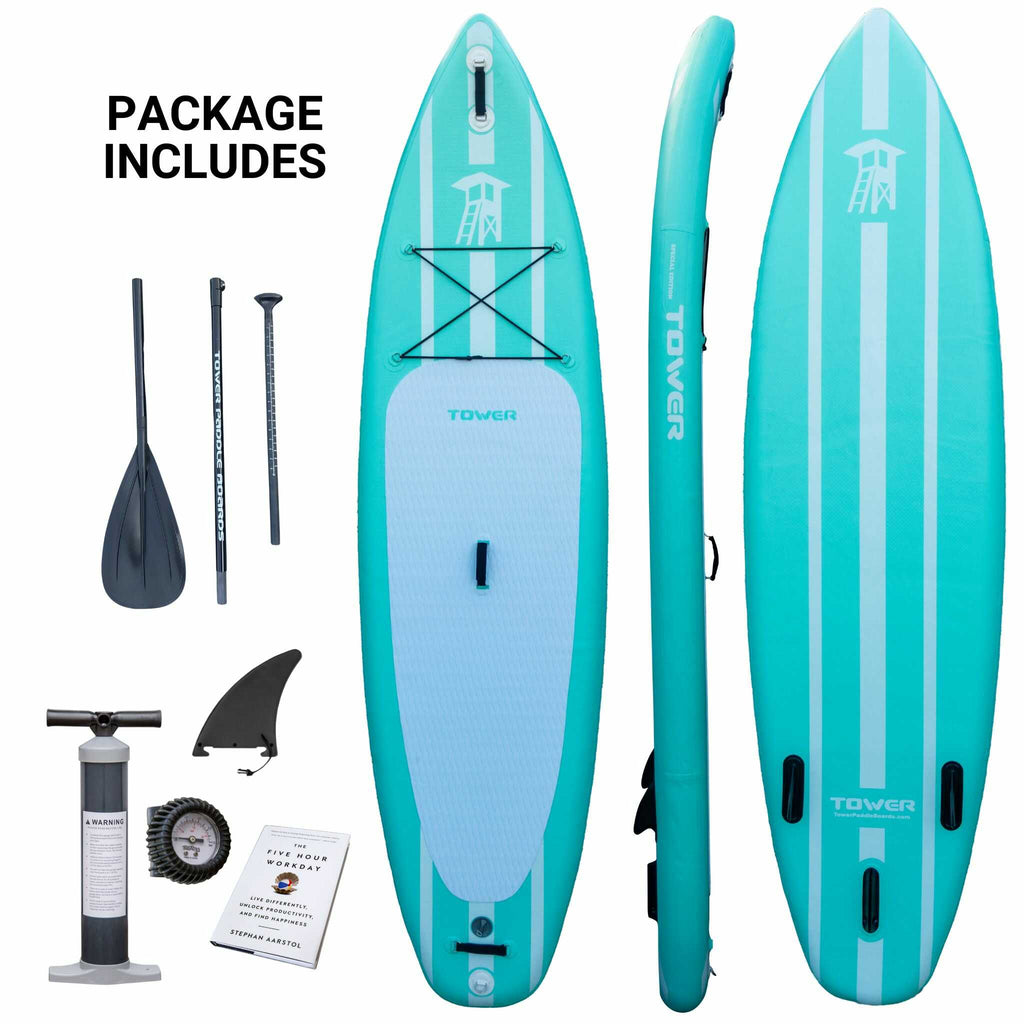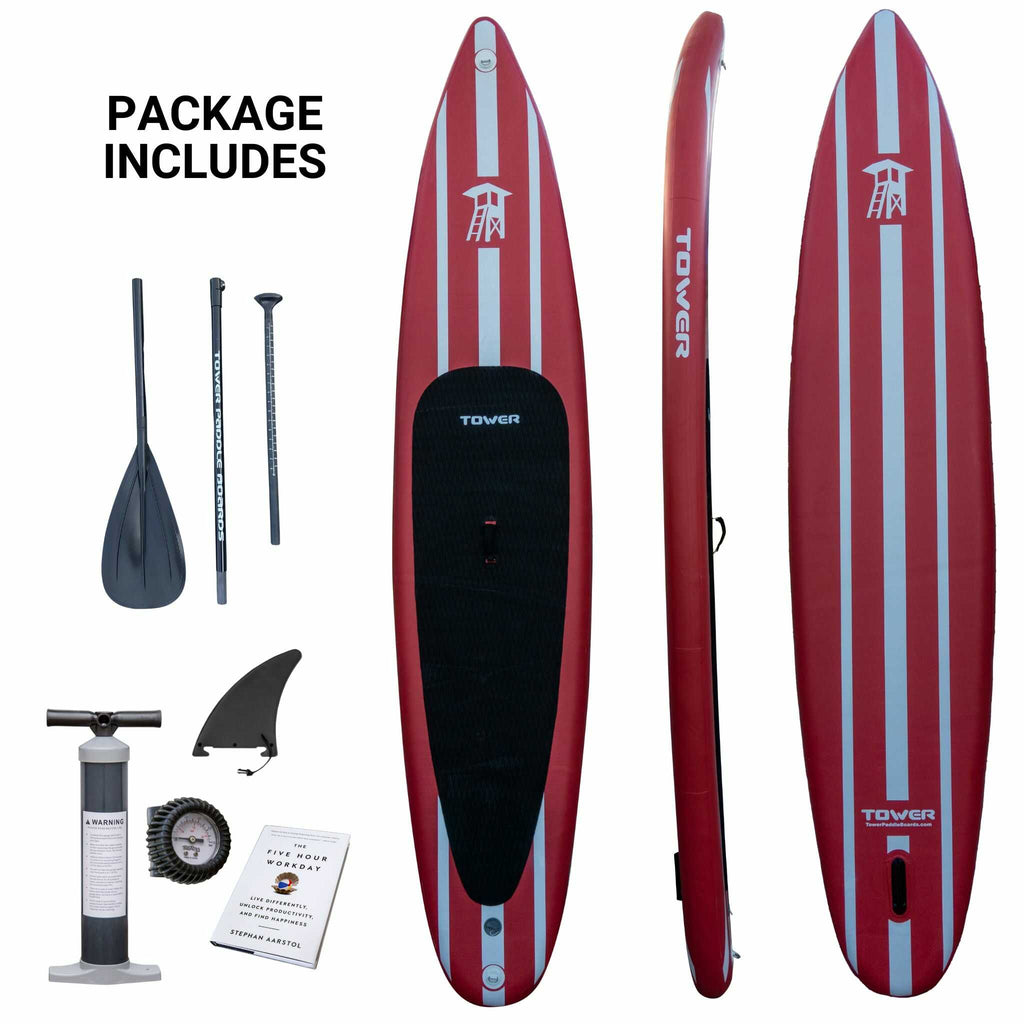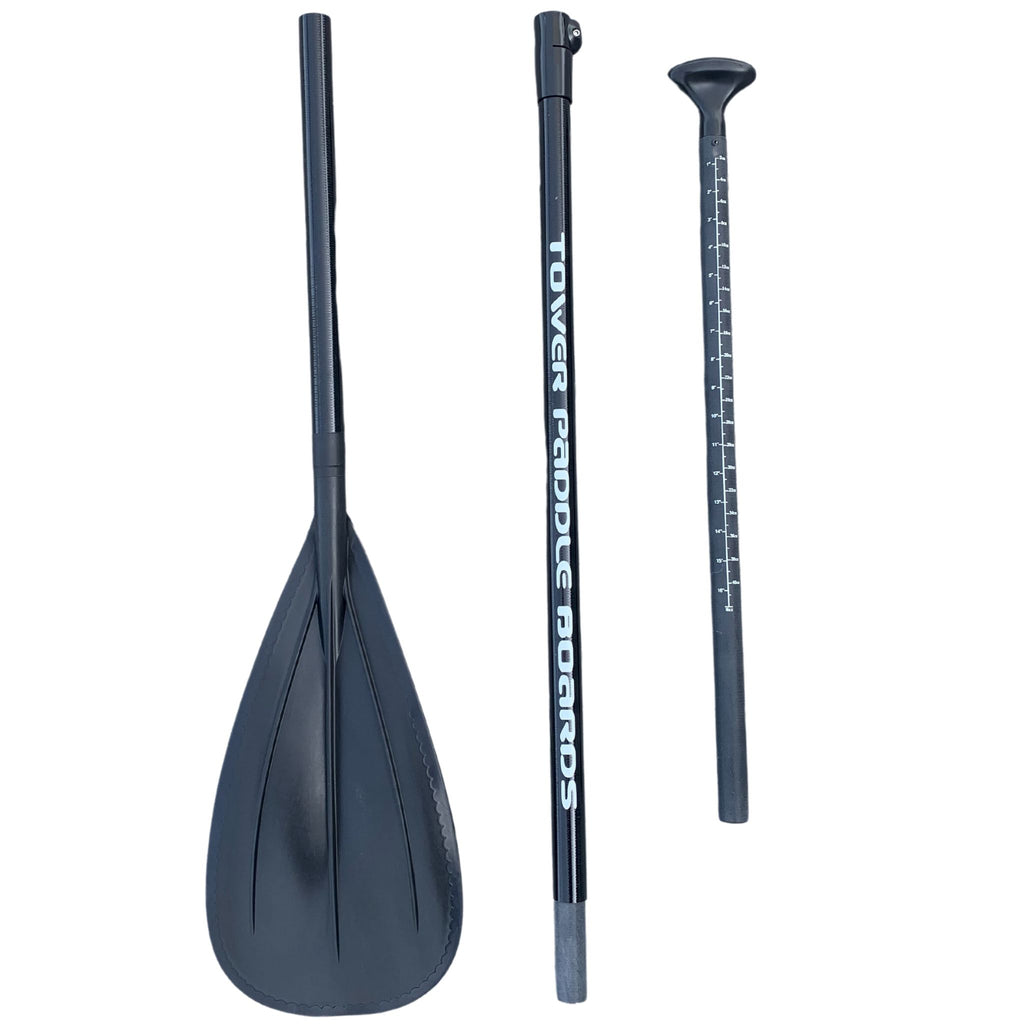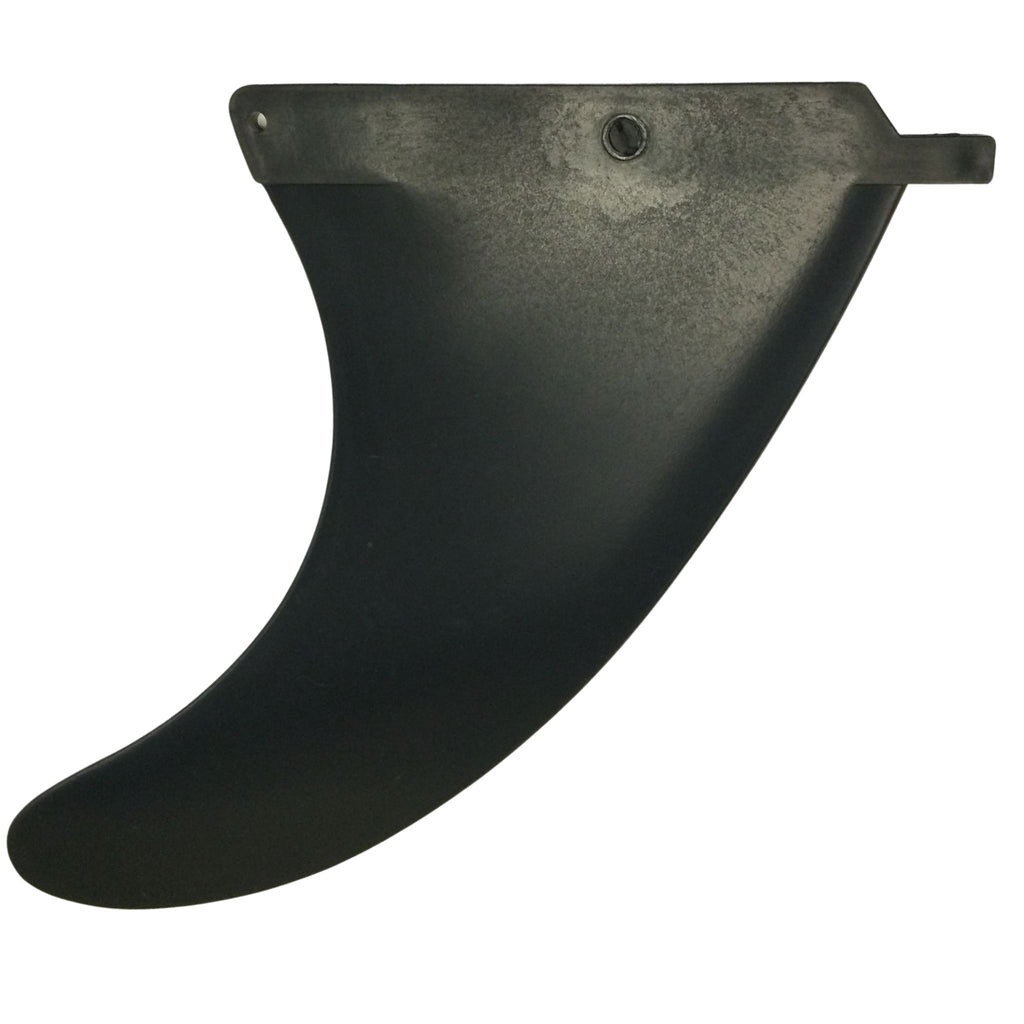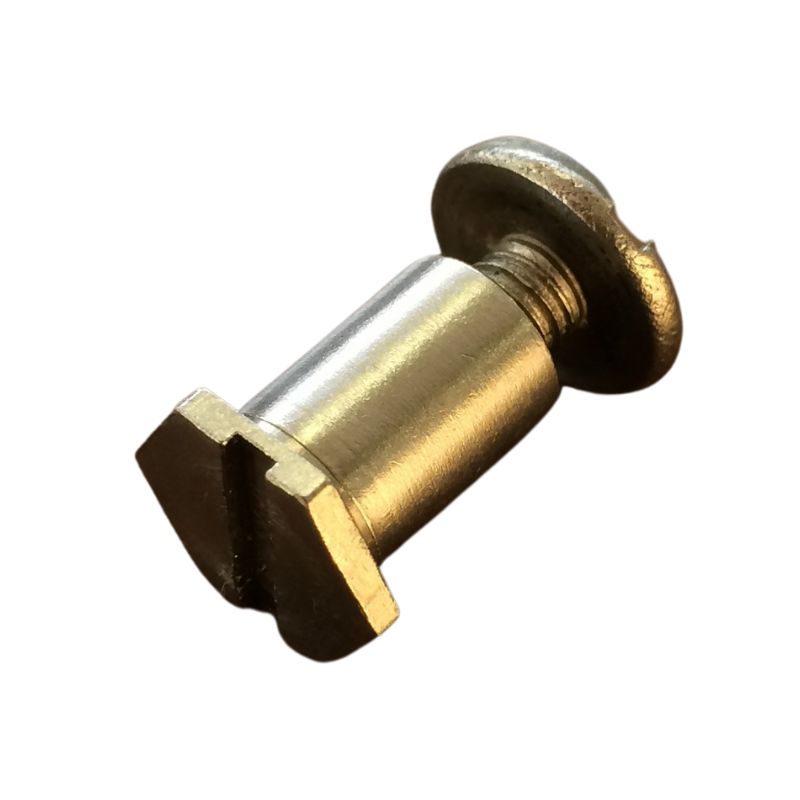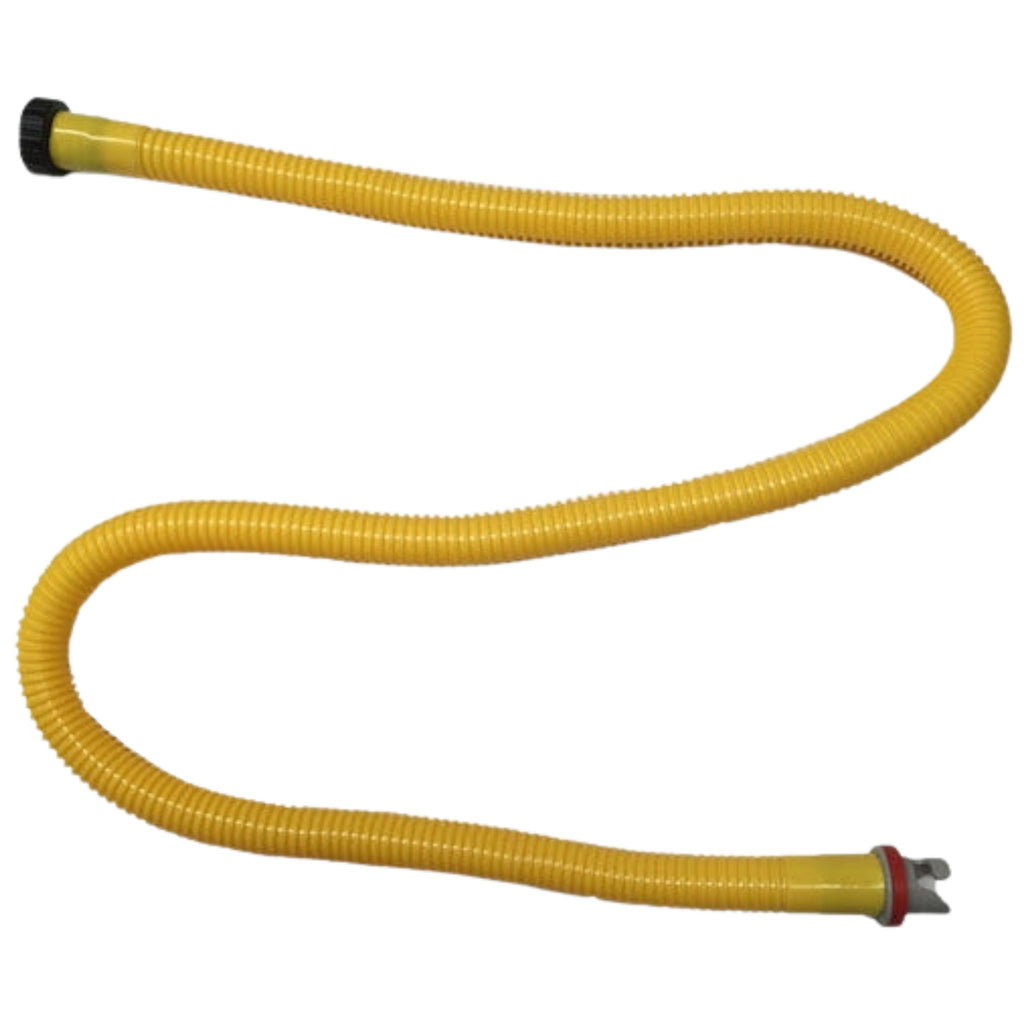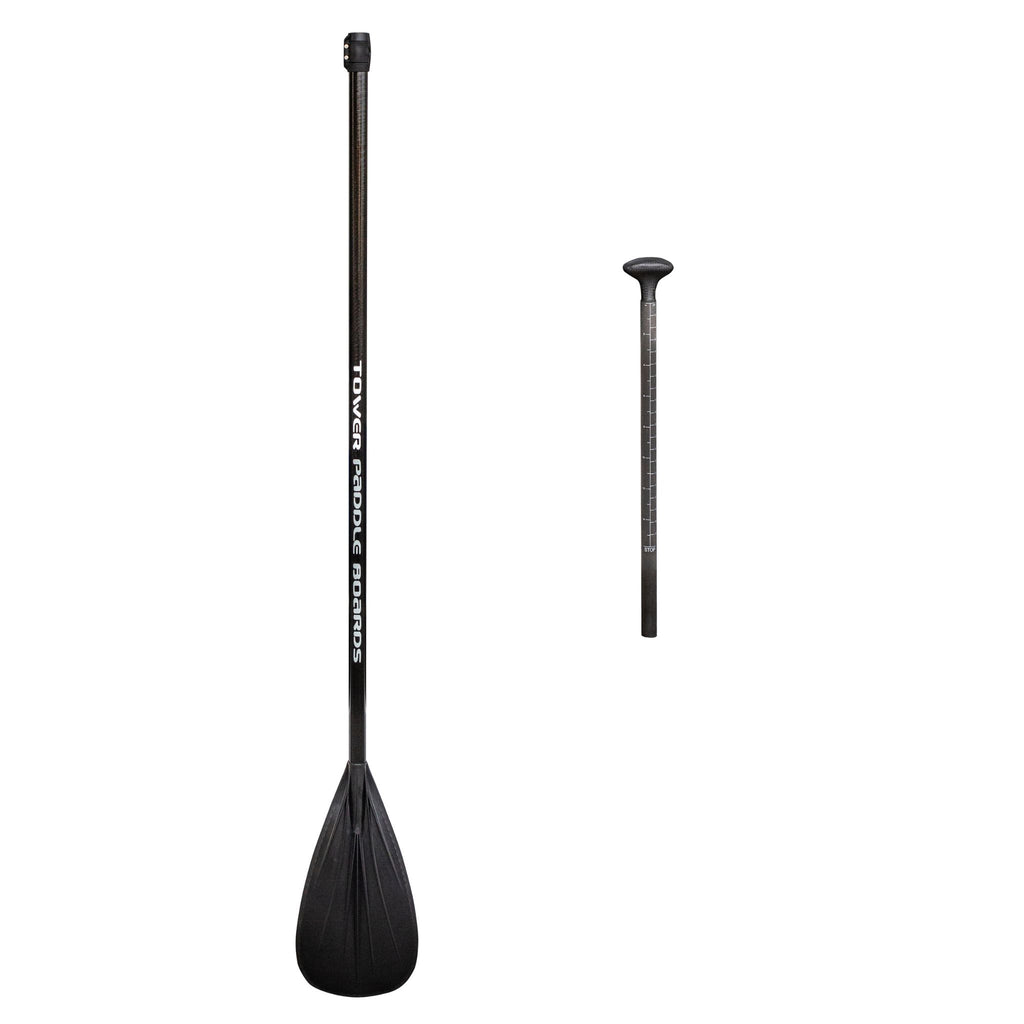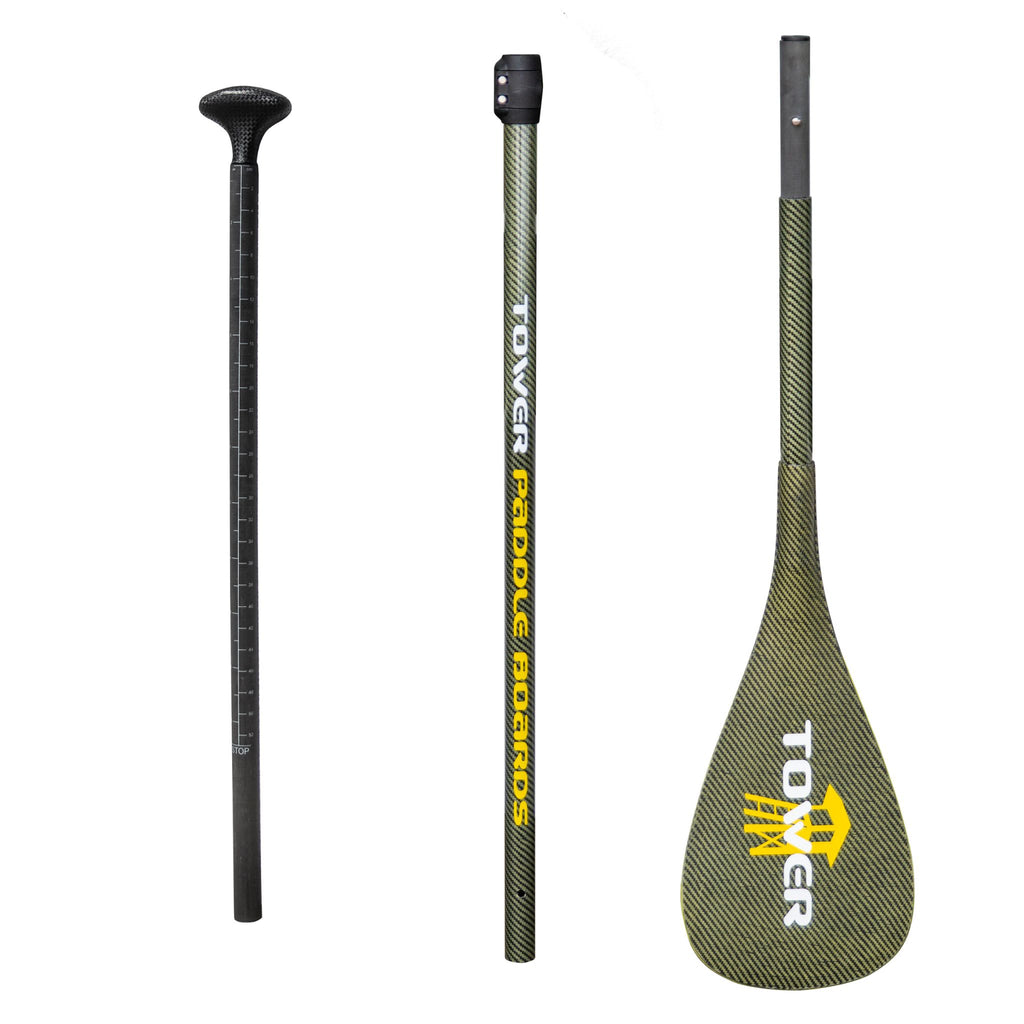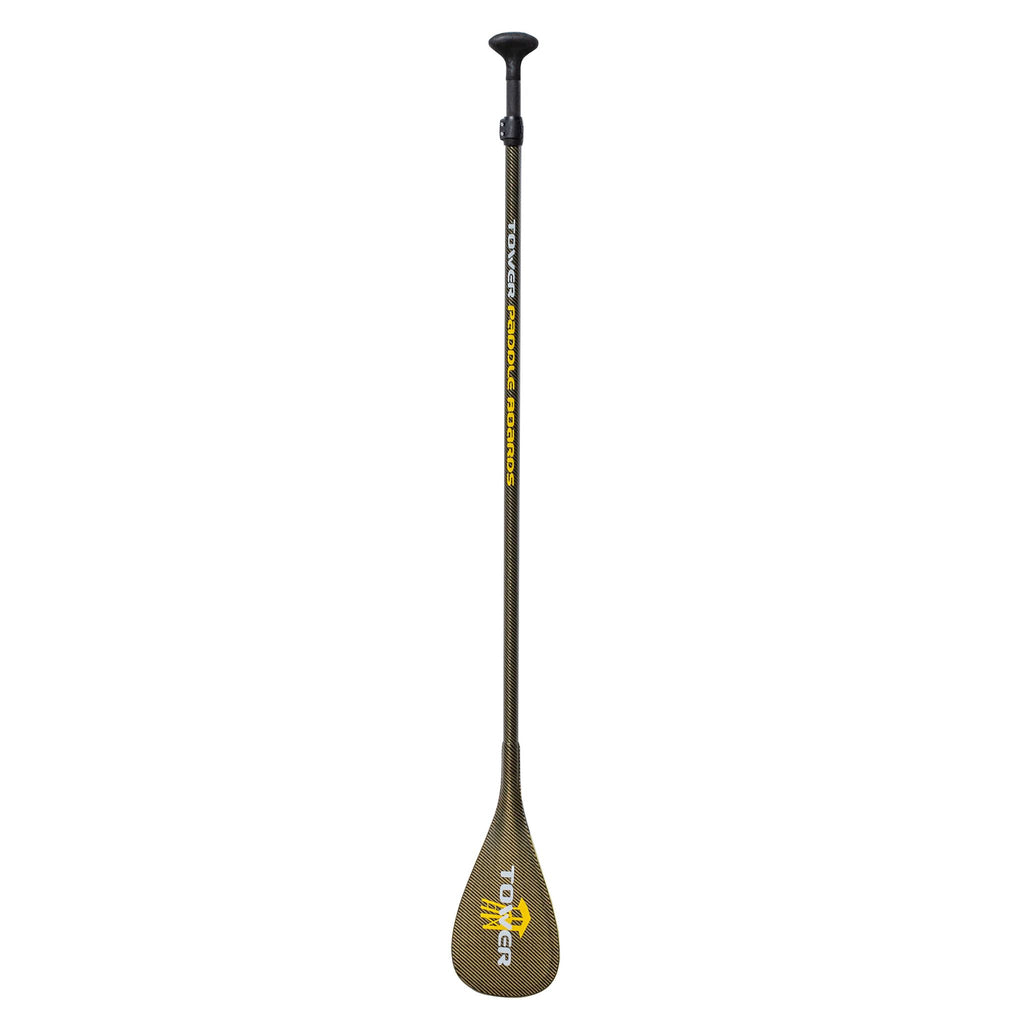Guide to Choosing the Best Stand-Up Paddle Boards
Many people are searching for the best stand-up paddle boards these days, but there are a lot of options and information to sift through before they make their choice. Here's a convenient board finder quiz to help you find the perfect paddle board for you.
Sadly, there is a ton of confusing and conflicting misinformation about what goes into good paddle boards. We’ve compiled a guide to identifying the best-quality paddle boards so you can knowledgably decide for yourself which is the best stand-up paddle board for your intended use and budget, with a focus on how the SUP is constructed.

The Insides of Hard Board Paddle Boards
The difficulty in differentiating between one stand-up paddle board and the next is that you can’t look inside. As a prospective buyer, you’re left to sort through unfamiliar industry lingo, and you’ll repeatedly hear terms thrown around like:
- Hand-shaped
- CNC-machined
- EPS foam (expanded polystyrene, or beaded) cores of different densities
- XTR foam (extruded polystyrene, or solid shape) cores of different densities
- Glassing: double and triple top or bottom glassing of different-weight glass (fiberglass cloth that gets resin added to it to form a reinforcing layer of strength)
- Biaxial glass
- Stringers
- Epoxy resins
- Wood veneers
- Sandwich wood construction
- Specialty high-density foam sandwich construction
- Vacuum bagging
Without getting into an overly technical discussion, it’s still relatively easy to understand what is and is not a quality board. Our guide will help you understand why one paddleboard costs $800 while another SUP of similar size that looks pretty much the same costs maybe $1,600. We go into more detail on our paddle board price page.

Inflatable Paddle Boards Rise in Popularity
Prior to 2011, pretty much every paddle board out there was a traditional hard board made out of epoxy resin and fiberglass. There were some 4-inch-thick inflatable SUPs out there, but they were not rigid enough. They were slow and produced an undulating ride. In 2011, in an effort to make inflatable paddle boards more rigid, we started prototyping ISUP innovations, and in 2012, we rolled out one of the first 6-inch-thick inflatable boards on the market.
Six-inch-thick inflatable paddle boards changed everything. Suddenly, ISUPs were super-rigid. They could support a 200-pound person over an 8-foot span and barely flex at all. Now, inflatable SUPs were a viable replacement for hard boards. Within a few years, pretty much every SUP company out there was starting to make inflatable paddle boards.
As Tower was one of the pioneers in the ISUP space, we’ve become an industry leader, using only the best materials and construction to become one of the top paddle board brands. Some of the highlights of our success include:
- 2015: Tower ISUPs were named one of the ten most impressive products in the U.S. on the Inc. 500.
- 2016: Tower was named one of the top five paddle board brands in the world.
- 2017: Robb Report named Tower’s Chris Craft ISUP the #1 best stand-up paddle board worldwide, better than competitor SUPs priced at $2,400 to $3,400.
The benefits of inflatable paddle boards are many. Check out this video for more details:
Distribution Channels as Pricing Factors
While price is generally a good indicator of quality for most products, differing distribution channels for SUP boards muddy the water. The top paddle board companies don’t necessarily have the most expensive products. In fact, a board you can buy for $800 from a direct-to-consumer brand is likely equivalent in quality to a board you’d pay $1,200 retail for at a local surf, kayak, or outdoor shop. Sometimes, the difference in cost for a comparable paddle board can be as much as $1,000 based on who you buy it from. Before you can separate out construction quality factors and costs, it’s essential to wrap your head around how the differing distribution channels in the stand-up paddle board marketplace affect the prices you see as a customer.
Traditional Three-Tier Distribution Channel Brands
Because stand-up paddle boards originated from the surf industry, the vast majority of SUPs are sold through a traditional three-tiered retail/wholesale/factory distribution channel. The customer is buying from a local surf shop, kayak shop, or outdoor retailer at a roughly 40% retail markup. The retailer is buying from the brand at a 20% to 40% wholesale markup. The brand is buying from the factory, which also has a profit margin cooked into the pricing. And there are two or three levels of shipping costs built in here: the shipping from the factory to the distributor, the shipping from the distributor to the retailer, and sometimes the shipping from the retailer to the customer. With few exceptions, the brands you find in a local surf shop, kayak shop, or outdoor retailer all follow this three-tier distribution channel.
Direct-to-Consumer Stand-Up Paddle Board Brands
In the stand-up paddle board market, there are a handful of direct-to-consumer brands that buy direct from the factory and then act as the retailer themselves to sell directly to consumers. Tower Paddle Boards is a leader in this space, and we sell worldwide. There is no wholesale middleman in this distribution model. These are typically boutique brands that primarily serve their local markets and sometimes customers in other areas via the Web. If a customer picks up a board locally, there is only one level of shipping (from the factory) built into the retail price. If the stand-up paddle board is a hard board and shipped to the customer, it will cost another $200 to $700 to ship across the country. Inflatable paddle boards ship for less than $40 because they can be sent via UPS. Still, there is no wholesaler-to-retailer shipping cost built into the retail price, nor will the customer incur any sales tax in many states, so part of this retail-to-consumer shipping cost is offset when you view the components of the direct MSRP holistically. In summary, you’re going to get an equivalent-quality board at a lower cost every time with the direct-to-consumer brands, even when shipping is factored in. On standard boards, a customer will save around $400. On the very top-end boards, the customer can save from $600 to as much as $1,000!
This is the Tower Paddle Boards business model, and this is why we’ve had a great deal of success:
- In 2014, we were named the #1 fastest-growing private company in San Diego (among any company, even tech companies and VC-funded companies).
- People named us one of the biggest success stories in the history of ABC’s Shark Tank, with more than $34 million in sales, and we’re Mark Cuban’s best investment from the show as well.
- In 2015, we ranked #239 on the Inc. 500 list of America’s fastest-growing companies
Production Cost vs. Quality
In the early days of the SUP boom (2010-13), most of the highest-quality paddle boards made overseas were all made in the same 60,000-square-foot factory in Thailand that has been producing surfboards, windsurfers, and such for about 30 years. Many brands still use this “gold standard” factory today. Each of the brands is made to different specs and with slightly different construction techniques (most use a base PVC sandwich construction), but as a group, they had historically been producing boards of a much higher quality than boards made in the other major SUP factories, which were in China. As the stand-up paddle board boom blossomed, the Chinese factories quickly caught up to the quality on hard board SUPs, and today, you can find quality in both markets.
The problem for consumers during the early SUP boom was that as this one factory controlled so much of the SUP market share, they had the ability to control pricing to a certain degree. The quality they produced was better, but they charged a disproportionate premium for that quality advantage. If you shop around for many of the major brands, you’ll notice that their prices are higher than you would expect and their pricing is similar, even across brands. Because of this paddle board price-fixing, the door opened for higher-quality production in many Chinese factories at much lower costs, so the quality gap closed pretty fast. Today, nearly a decade into the SUP craze, there are several Chinese factories producing molded boards on par with their Thai counterparts.
With the growing popularity of inflatable paddle boards, it’s important to wrap your head around indicators of quality in this area, too. The market is headed to a point where more people go the inflatable SUP route; high-quality inflatable boards can be pretty amazing from a durability prospective. It’s easy to ascertain the quality level of a low-quality inflatable because brands can’t hide how rigid a board is, how cleanly the seams are made and will hold up, or how the internal drop-stitch pattern connects everything. There are a lot of reviews online, so check around and do your research if you want to learn more about what makes the best inflatable SUP boards better than lesser ISUPs.
High- Versus Low-Quality SUP Construction for Hard Boards
There are two basic types of SUP construction for hard boards: EPS/epoxy lay-up construction and PVC sandwich construction.
SUP Construction Type 1: Traditional EPS/Epoxy Lay-up Construction
This is identical to traditional surfboard construction in that a foam block is shaped and then layers of glassing are applied to the outside. The difference is that with stand-up paddleboards, a lighter and stronger EPS foam core is used, which necessitates a more expensive epoxy resin used in the glassing stage. In this EPS/epoxy construction, blanks are shaped out of EPS foam, also called expanded polystyrene foam. Then, swaths of fiberglass fabric are laid over the board and resin is poured over in a glassing stage. This step is repeated on the top and bottom multiple times, with the rails overlapping each time.
A lot of skilled craftsmanship is needed during the glassing process. On clear-coat boards, you can see the quality (or lack thereof) of the glassing job directly. One thing you’ll notice is that many SUP boards are painted. While this is sometimes a design feature, it is also very frequently a means to cover up shoddy glassing jobs. Once a board is painted, you have no clue as to the quality of the glassing job. The paint layer actually does nothing to strengthen the skin of a board and just adds weight. In low-end construction, you’ll also run into issues of this epoxy paint chipping very easily with use. Other types of materials, such as carbon fiber, can be used in place of fiberglass in this type of construction, and this is what you’ll find on some of the lightest and best stand-up paddle boards on the market.
SUP Construction Type 2: PVC Sandwich Construction
Whereas traditional EPS/epoxy lay-up construction uses multiple layers of the same fiberglass to create a shell, PVC sandwich construction uses three layers to create a sandwich. For example, this method might use an inner layer of fiberglass, a middle layer of high-density foam (or wood laminate), and then another layer of outer fiberglass. All things being equal, this sandwich construction is more expensive to produce and creates a stronger shell. Note, however, that there are many degrees of quality and materials used in sandwich construction. Typically, sandwich construction involves creating the outer shell in a mold, and then the foam is blown in. Our beautiful wood paddle boards are made using sandwich construction with an attractive wood laminate. These boards are very durable paddle boards.

If a board has a clear-coat finish (a translucent outer layer on the foam), you can see the quality of the construction and won’t have to worry about paint chipping, as there is no paint layer. The exterior will be as strong as the quality of the glassing job, the number and weight of the cloth layers used, the type of cloth used (fiberglass, carbon fiber, carbon cross link, or another material), the quality of the resin used, and the craftsmanship in the sanding job. We tend to stick to these for our hard board SUPs.
If a board is painted, you really don’t even know what the construction underneath is. Also, the quality and propensity of the paint job to chip can vary. Better paint jobs tend to have a protective clear-coat epoxy finish over the paint to minimize chipping. The board construction underneath can be the very highest-quality sandwich construction, or it can be high-quality lay-up construction, or it can be the lowest-quality lay-up construction. If it’s sandwich construction, odds are decent that it’s a fair-quality board. If it’s lay-up construction, it varies.
Hard Board Foam Density
The density rating of a foam core is measured in pounds per cubic foot or kilograms per cubic meter. In general, the higher the density of the foam, the harder and more rigid it is, meaning that it’s harder to get pressure dings from standing on the board and bumping into random objects. On the flip side, the higher the density of the foam, the heavier it is. With stand-up paddle boards (which weigh between 20 and 35 pounds), the trick is to figure out how to get the most strength from the least weight. If you create a really strong outer shell, you can get away with using lighter foam in the core to make a lighter overall board. Good paddle boards can achieve this balance. Brands that try to produce lower-quality boards with this same low-weight strategy produce boards that ding easily and even potentially snap in the waves. If they instead opt for higher-density (and heavier) foam to cover the strength shortfalls of their shell, it results in a much heavier board; it won’t snap or ding as easily, but the shell is still easy to penetrate, which means your board is in the repair shop often. This is what you’ll frequently find in low-price-point boards.
Typical Surfboard Foam
Surfboards have historically been produced using a polyurethane foam core (also called a PU foam core). The density of typical surfboard foam is about 2.3 pounds per cubic foot (or 37 kilograms per cubic meter). In surfboard construction, the polyurethane foam blank is formed into its final surfboard shape and then coated with one or two layers of fiberglass woven cloth and hardened with a polyurethane resin.
While it’s possible to make a stand-up paddle board using PU foam, the result would be a very heavy board due to the massive size of SUPs. Paddle boards, and many modern surfboards, typically use EPS foam (think of the foam used in a cheap cooler), which is lighter (typically 12 to 20 kilograms per cubic meter, versus 37 for PU foam), and are then reinforced with more than just the one or two thin layers of glassing you’d find on a traditional surfboard. When EPS foam is used, you can only use epoxy resin, not polyurethane. Epoxy resin is stronger and more ding-resistant that polyester resin.
A Buyer’s Guide to Inflatable Paddle Board Construction

For the most in depth tutorial on inflatable paddle board construction on the Internet, check out our comprehensive "iSUP Construction Explained & FAQ" page.
Avoid 4-Inch-Thick Inflatable Paddle Boards
You’ll want to avoid 4-inch-thick inflatable paddle boards at all costs. Yes, they are a lot cheaper to buy, but there is a reason no one was riding them when we started prototyping 6-inch-thick inflatable paddleboards in 2011. Only when 6-inch-thick boards came onto the market did inflatable SUPs become a viable product. The SUP market literally changed overnight. Inflatable paddle boards went from less than 1% of the market to well more than 70% in a period of about five years. Stick with 6-inch boards; you might even consider 8-inch-thick ISUPs when you go to a racing/touring shape.
Avoid Gray Inflatable Paddle Boards
There is a base gray layer that a good percentage of the drop-stitch material always comes in. This is a sign of a single-layer board with no reinforcement layers. To endure use over time, you need multiple layers reinforcing one another, especially around the rails and over the seams. Any high-quality inflatable paddle board will be double-layered and hand-glued, which results in up to four overlapping layers at the critical seam points. You want to avoid these gray, single-layer boards.
Avoid Single-Layer and Machine-Fused ISUPs
Around 2015, Chinese factories figured out that they could machine-laminate graphics directly onto the base layer and save the material costs of a second layer. This also made the ISUPs lighter because they used less material. This was pitched as an advance in ISUP construction and quality, but it wasn’t. The downside is that these inflatable paddle boards are much less durable. You can find a lot of these inferior inflatable paddle boards in Amazon’s marketplace, so buyer beware.
Look for a Crisscross Pattern of Indents on the ISUP
Best-in-class inflatable paddle boards have a crisscross pattern of indents on the surface of the board, which you can see when the boards are inflated. Each indent is a cross-stitch filament that connects the top of the board to the bottom. Crisscrossing them makes for the strongest structure. You will see some cheaper inflatable SUPs with parallel aligned structure. Stay away from these.
Check ISUP reviews and Choose a Brand With a Good Track Record
Definitely check out inflatable paddle board reviews, as inflatable SUPs prove their quality over time with use, not merely by someone looking at them or by quoting specs. Shop around; your best bet is to go with a brand with a consistent track record. At Tower Paddle Boards, we’ve been a leader in inflatable paddle boards for nearly a decade.
Stephan Aarstol
Founder & CEO
Tower Paddle Boards









